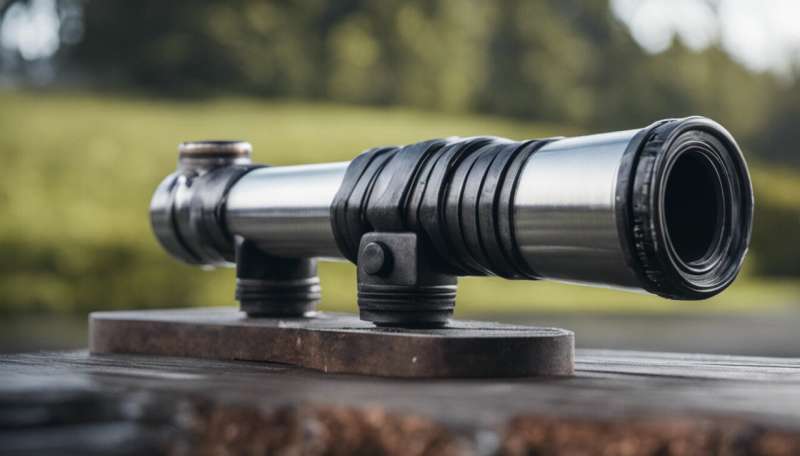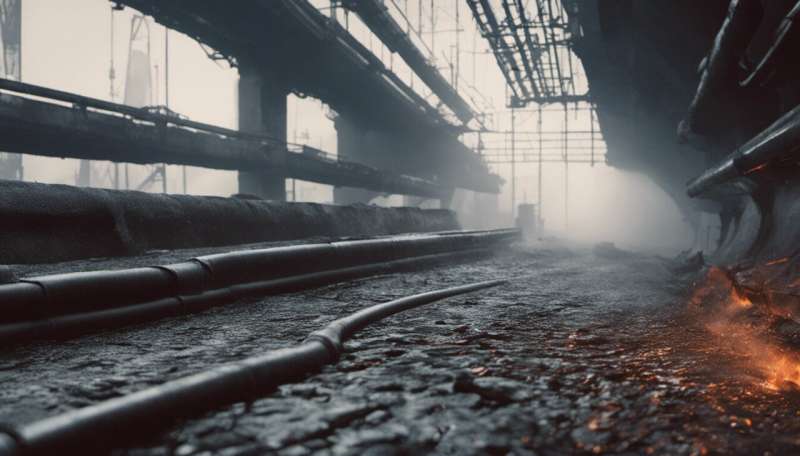
The UK is losing a staggering 3 billion liters of water each day through leaky pipes. The issue is not limited to the UK alone. Globally, almost 90 billion liters of water are lost daily, accounting for up to half of all the water pumped around the world.
The environmental impact of this water loss is substantial. The process of treating and pumping water consumes between 2% and 3% of the world’s total energy usage, so the energy that is wasted due to water loss corresponds to around 1% of the global carbon footprint.
But why does so much water leak from pipes?
The UK’s water network consists of a vast system of buried pipes, spanning more than 300,000km. Many of these pipes were laid down by the Victorians—and some over 200 years ago—and they are now deteriorating. These pipes are also often situated in hard-to-reach and crowded areas deep underground, making maintenance, repairs and leak detection very challenging.
In recent decades, water companies have introduced plastic pipes with the expectation of reducing the number of leaks. Around one-third of the network is now made up of plastic pipes. However, these pipes are prone to leaks too, particularly at the joints.
One of the challenges facing the UK water industry is that detecting leaks in plastic pipes has proven to be more difficult than anticipated. Over the past 25 years, I have worked closely with the UK water industry to understand where we have been going wrong. It turns out that the traditional way of looking for leaks on metal pipes—by listening for them—doesn’t work well for plastic pipes.
Listening for leaks
Water leaks produce an audible sound. In the case of metal pipes, these sounds can travel many hundreds of meters—sometimes even kilometers—along the pipe.
We use instruments called hydrophones to pick up these acoustic signals. Hydrophones are essentially underwater microphones that we place at accessible points along the pipe network, such as fire hydrants. By analyzing the time it takes for the leak noise to reach different hydrophone locations, it is possible to estimate the whereabouts of the leak.

This method of leak detection has been widely used in the water industry for many decades and has proven to be very effective—that is, until the widespread introduction of plastic pipes.
When the same method for leak detection was first used on plastic pipes, it simply didn’t work. We have since spent years studying how sound travels in plastic water pipes, and we now know that something quite different happens compared to their metal counterparts.
The reason that sound travels such a long way in metal pipes is that the acoustic energy largely stays within the water. However, in plastic pipes, a lot of the energy transfers to the pipe wall where it either dissipates as heat or radiates into the surrounding ground. As a result, there is less acoustic energy available to travel along the pipe.
To put it simply, the leak noise doesn’t travel as far in plastic pipes, so the sound often does not reach the hydrophones placed along the pipe network.
Plugging the leaks
Researchers are currently exploring different ways to exploit the fact that much of the noise energy from leaks in plastic pipes radiates into the ground.
One way would be to measure the vibrations on the surface of the ground and use these measurements to determine the location of the leak. By deploying an array of sensors in the vicinity of the pipe, we can figure out the direction from which the noise of the leak is coming. Repeated measurements taken at different locations would then allow us to gradually narrow down the position of the leak.
This approach is likely to work well in rural areas where the underground space is less crowded and background noise is minimal. However, it may not be as practical in bustling underground urban environments.
Another solution is to use technology that already surrounds us, such as fiber optic telecommunications cables. These cables are typically laid along pipeline routes and are extensively found in urban areas. They are also sensitive to both temperature and vibration, so could potentially be used as distributed acoustic and temperature sensors.
It’s essential that new ways of finding water leaks more effectively are found—if not only to save money on bills, then for the sake of the world’s climate, which is fast running out of time.
This article is republished from The Conversation under a Creative Commons license. Read the original article.![]()
Citation:
The UK’s water pipe upgrade has made it harder to detect leaks. Race is on to discover new ways to find them (2023, July 18)
retrieved 18 July 2023
from https://techxplore.com/news/2023-07-uk-pipe-harder-leaks-ways.html
This document is subject to copyright. Apart from any fair dealing for the purpose of private study or research, no
part may be reproduced without the written permission. The content is provided for information purposes only.
Stay connected with us on social media platform for instant update click here to join our Twitter, & Facebook
We are now on Telegram. Click here to join our channel (@TechiUpdate) and stay updated with the latest Technology headlines.
For all the latest Technology News Click Here
For the latest news and updates, follow us on Google News.
